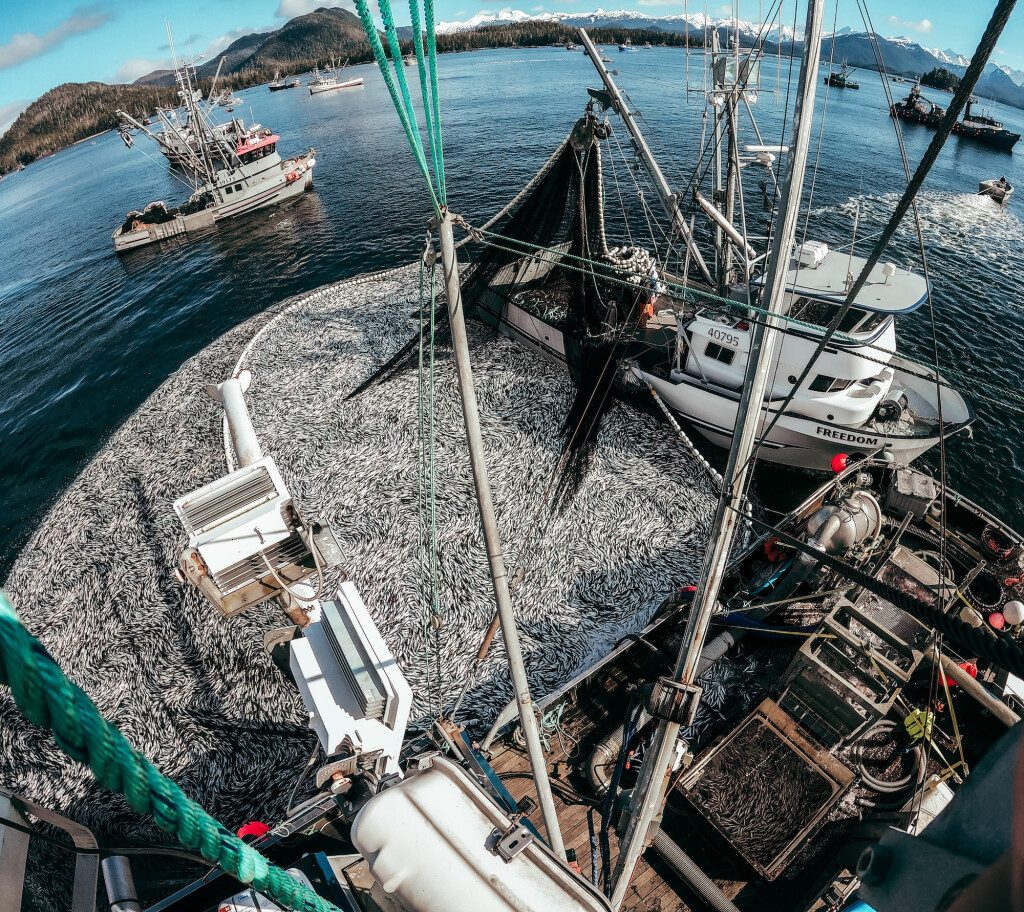The arrival of herring signals the start of Alaska’s spring fisheries, and this year’s catch levels from each of the three main areas are record breakers.
Combined harvests from three prime producing areas total 118,346 tons, or nearly 237 million pounds.
The numbers come from fisheries at Sitka Sound in late March, where the catch this year is set at more than 45,164 tons (90 million pounds). That’s followed on April 1 at Kodiak, where a harvest of 8,075 tons (16 million pounds) can be hauled in. Alaska’s largest roe herring fishery at Togiak in Bristol Bay kicks off in May with a whopping limit set at 65,107 tons (130 million pounds).
But once again, the bulk of the available fish will go unharvested because of limited buying capacity (though it is up from last year).
Since the 1970s, the value of Alaska’s herring fishery has been driven by the roe-laden skeins in the female fish. When the huge schools arrive, managers monitor the condition of the ripening females over several days to obtain the highest-value product. Only then do they open the fishery to seiners and gillnetters.
In the 1990s, the roe herring could sell for well over $1,000 per ton to buyers in Japan, where the skeins are considered a delicacy. At that time, the fishery tallied over $60 million to fishermen. Since then, changing tastes and attitudes in Japan have driven the value below $5 million in 2020 with catches averaging just 8 cents per pound.
And Japan is Alaska’s only roe herring customer.
“It’s maybe the most extreme example of how a major Alaska industry could be dependent on an extremely specialized foreign market. And it is a stark contrast to the diverse buyers of other Alaska species,” said Gunnar Knapp, a retired University of Alaska fisheries economist.
Most of the herring is frozen whole and shipped out in 15 pound bags to secondary processors in Seattle or Asia, and then sent to Japan. The herring are sorted by sex and the egg skeins are “popped” from the females. The males that are taken as bycatch and the female carcasses are ground up for meal for foreign fish farms, or simply discarded. A small portion is sold as bait.
The herring not destined for human consumption runs as high as 88 percent each year.
“Herring is an [underutilized] resource,” said Alaska Dept. of Fish and Game Commissioner, Doug Vincent-Lang at ComFish in Kodiak. “We are going to have a Togiak herring quota that will largely go unharvested because there is not a market. We’re working with the processing sector to try and find a market.”
Herring is a mainstay in countries around the world where it’s filleted, smoked, pickled, salted and pated. The fish are provided primarily by Norwegian fleets and can pay out at $1.40 a pound to fishermen.
In Alaska, only Togiak herring are large enough to develop into fillets. Togiak fish can weigh between 14 ounces and a pound, compared to 4 to 5 ounces for other herring.
A report by the Alaska Seafood Marketing Institute says herring fillet production at Togiak could boost the first wholesale value to $14.5 million. That compares to an average value of $2.7 million between 2000 and 2019.
To reintroduce herring to American diners, ASMI in 2016 launched a wildly successful weeklong Northwest Herring Week in Seattle with about 10 high-end chefs. The event was led by ASMI Food Aid Director, Bruce Schactler of Kodiak, who obtained donations of Togiak herring fillets from North Pacific Seafoods. The next year nearly 60 chefs and restaurants participated.
The Alaska Legislature has expanded a product development tax to include herring. Marketers must have a ready customer before they can take advantage of the tax break.
Do I hear Seattle calling?







